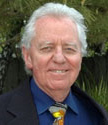 Letter from the President (Dr. William Emerson) in the APPPAH Newsletter (Summer 2011)
Letter from the President (Dr. William Emerson) in the APPPAH Newsletter (Summer 2011)
Dear APPPAH Members and Non-Members
More than 99% of U.S. women give birth in hospitals, and the remaining 0.6% give
birth at home, supported by midwifes. In the rest of the world, 70-80% of mothers give birth
at home, supported by midwives or qualified birth attendants. It’s important to ask why so
many U.S. mothers give birth in hospitals, and if this is the healthiest choice. Most
independent medical experts think not, and agree that homebirths are safe and that the hospital
birth rate is high not because it is so successful, but because doctors inadvertently scare
parents into believing birth is dangerous. Prenatal care becomes prenatal scare, as Michel
Odent points out.
When pressed to verify the danger, medical authorities cite a few studies that have major flaws, but do not
mention or recognize the flaws. In the flawed studies, homebirth data was polluted by the inclusion of unplanned and
unattended home births, which are very risky and end up with a high incidence of complications including injuries
and death. As compared to the flawed studies, there are a vast number of homebirth studies that indicate home birth
is as safe or safer than hospital birth for the vast majority of women who are in fact low risk. Medical researcher
Henci Goer reviewed the literature on home birth and said, “No study has ever shown that planned home birth with a
trained attendant who took proper precautions increased the incidence of poor outcomes…”
Home birth attendants usually practice the midwifery model of care, and this model has been fully described
by Citizens for Midwifery (www.cfmidwifery.org). It is not a fear-based system, but a system that supports and builds
confidence in women to give birth safely, usually at home or in birthing centers, with skilled and licensed midwives
in attendance. It contends that each labor is unique and takes time. It believes in the competence of women more than
technology, but welcomes interventions when necessary. Midwifery attendants are experts in normal birth, but are
also trained and licensed to recognize signs of trouble, consult with obstetricians, and transport to the hospital when
necessary.
The midwifery model and home birth have been practiced for over forty years in Holland, a country that
has the best maternity care system in the world, with the best birth outcomes and the fewest number of complications
and interventions. In Holland, midwives “deliver” about 35% of babies at home, and the rest in hospitals. When
necessary, midwives call in doctors to do surgery or other interventions for which they themselves are unlicensed.
Doctors and hospitals there welcome midwives, who are appreciated for their skills and excellent birth outcomes.
Information about the success and safety of home birth has been widely disseminated in the UK, so much so
that the UK health minister recently mandated that all UK countries increase their homebirth rates by 10%,
contending that women should be able “to choose… from…options including home birth and delivery in midwife-led
units” (BirthChoiceUK.com; MIDIRS, 2008). As a result, home births attended by midwives there increased 9.7%
overall, representing 2.5% of all births. The biggest rate increases were in England (10%) and Scotland (9.2%). The
increase in homebirth rates occurred despite subtle and overt resistance from the obstetric establishment.
Nevertheless, home birth is burgeoning and thriving in many parts of the world (references available on request). If
we follow the lead of our European neighbors, it appears hopeful that U.S. women may soon enjoy a greater range of
choices for childbirth, including the use of homes, out-of-hospital birth centers, in-hospital birth centers, and
hospitals.
In your service,
William R. Emerson, PhD
APPPAH President

